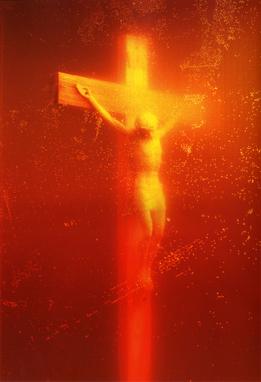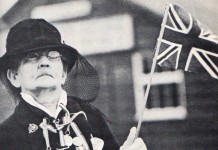
Art Wars: The Empire Strikes Out
Outrage in the States was bad; but artists didn’t lose their heads
By Mark Cromer
This article was first published in Artillery magazine in 2008
With today’s digital era so rich in explicit displays of virtually every aspect of the human experience, including amateur exhibitions of bodily functions beamed to us live via webcam, the idea of museum exhibits raising hell in America may seem, well, passé?
But a generation ago a handful of works by artists Robert Mapplethorpe and Andres Serrano ignited a national pissing match (if you will) over art, its public funding and—ostensibly—freedom of speech.
Of course, the volume of the societal dialog on public art exhibitions and the taxpayer’s financing of controversial works had been escalating long before the visions of Mapplethorpe and Serrano were hung on the proverbial gallery wall, but it was those two artists who were at Ground Zero when simmering cultural tensions exploded into a volatile debate.
Looking at it now, Serrano’s 1987 Piss Christ seems an odd selection for what was then denounced as the apex of petty vulgarity fraudulently pawned off as ‘art’ by a bored bourgeoisie looking for a cheap thrill on the taxpayer’s tab. The photograph delivers its punch not through the sublimely beautiful image of a radiant crucifix bathed in warm hues of amber, but rather lands a haymaker through the title of the work itself—and what it reveals.
Those two words—Piss Christ—turned a richly divine image into something the mob saw as starkly demonic. Yet reverse the words; and televangelists would be selling it.
But it wasn’t until two years later, in May of 1989, that Serrano’s urine really hit the fan. Seizing on the fact that the National Endowment of the Arts had indirectly awarded Serrano a $15,000 grant, New York Senator Alfonse D’Amato saw a golden (so to speak) opportunity to grandstand on publicly funded “filth” and took to the Senate floor to tear up Piss Christ both figuratively and literally.
D’Amato’s esteemed colleague from North Carolina, Sen. Jesse Helms (think Strother Martin’s character in Cool Hand Luke), who had been agitating for a brawl with the NEA and its damn Yankee liberal supporters, jumped in with his buddy Al.
“The Senator from New York is absolutely correct in his indignation and in his description of the blasphemy of the so-called artwork,” Helms said. “I do not know Mr. Andres Serrano, and I hope I never meet him. Because he is not an artist, he is a jerk.”
Helms view of Mapplethorpe was decidedly more ominous both in tone and implication, with the astute senator alerting the New York Times that the artist was “an acknowledged homosexual.” If Serrano’s work rocked conventional perceptions of the Judeo-Christian boat, Helms undoubtedly saw Mapplethorpe’s unconventional perspective on bullwhips and black men as the wall hangings from the seventh ring of hell.
And Jesse wasn’t alone. Mapplethorpe’s work resulted in protests and criminal busts, notably in Cincinnati, where city fathers charged the Contemporary Art Center and its Director Dennis Barrie with obscenity—and a jury of mid-Westerners delivered an acquittal.
Those were some big headlines two decades ago. But if the argument has faded, its legacy has not.
“The culture wars of the late 1980s and early 1990s changed the very structure of arts funding in ways that now often go un-remarked or unnoticed,” says Richard Meyer, an associate professor of art history at USC who has written extensively on the subject. “Individual artists are no longer eligible, for example, for funding from the NEA and virtually no one expects—or applies to—the federal government to support dissident, controversial or otherwise oppositional art.”
Meyers says the result has been a withering away of the “artistic culture of social dissent,” erosion he calls “a genuine loss and a great shame.”
Perhaps, but in hindsight it’s hard to shake a sense of uniquely American frivolity that surrounded some of the proceedings; indulging our super-sized taste with an over-dramatized battle between freedom and censorship.
The fact is that even angry grand-standers like Helms and D’Amato publicly acknowledged the fundamental right of Serrano and Mapplethorpe to make and display their art. Consider that against the artists in the Netherlands today, that need round-the-clock protection (provided by the government) for having dared to offend Islamic sensibilities. The very credible threats against these artists lives today puts rants of the Jesse & Al Show, and even the lame busts, in stark perspective.
And Serrano’s back with a new show—entitled simply Shit and featuring yet more of the artist’s, um, excretions—that opened at the Yvon Lambert Gallery in Chelsea in September. As Artillery went to press, no word yet of any senators denouncing him from that chamber.
But I suspect if the exhibit’s patrons listen carefully as they line up to appreciate the oversize photographic servings of feces, they may well hear the chuckling drawl of the ghost of a good’ole boy reminding them “You get what you pay for.”
That goes for the government, as well as the art.










